Innovation in the Era of COVID-19
Like the majority of the world’s population in April 2020, I find myself unable to implement my preferred method of innovation discovery. Shelter-in-place, social distancing, and international border closures make it difficult to conduct innovation workshops or experience other cultures around the world as a way of finding new insights into problem-solving. Although technology-enabled remote interactions are plentiful in the modern era (thanks to numerous software tools and applications combined with the internet), these techniques still will never be able to replace physical interactions, whether in the form of face-to-face discussions with others or in the form of just being able to walk through an ancient archaeological site to get a sense of how our predecessors applied new thinking to meet their challenges. Yet in the words of the medieval Persian adage, this, too, shall pass and at some point in the future we will all be back to our globe-trotting ways. In the meantime, however, I would like to make use of an innovation technique I have mentioned in previous articles. For lack of a better term, I refer to this concept as innovation potpourri, which is the collection and amalgamation of disparate ideas and thoughts captured without a specific notion of how any of these ideas will be applied. This article contains a series of unconnected thoughts that I have captured in the past year, each of which offers the innovation practitioner a possible technique for applying new thinking to solving problems.
Ernest Hemingway
I have always been a fan of Ernest Hemingway’s writing and a few months before the pandemic I made a trip to Key West and visited his home on Whitehead Street, where he lived in the 1930s. The Key West house, with its New Orleans French-Quarter style wrap-around porches surrounded by thick tropical vegetation, is as iconic as one would expect. The highlight of the tour is the writer’s studio above the carriage house where one can almost sense the creative energy flowing from the room, which Hemingway could access via a catwalk from the second floor of the home. Seeing that room reminded me of some well-known concepts from his writing that might be of interest to the modern innovation practitioner.
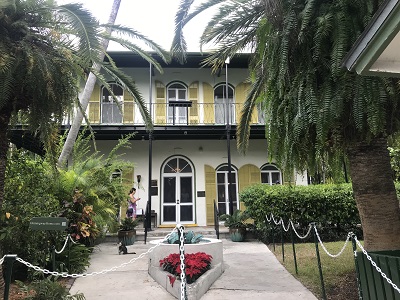
In a recent book that explores the various places where her great grandfather lived and worked, Cristen Hemingway Jaynes notes that Hemingway’s philosophy of writing aligned with the following mantra – “write honestly about what you know and stop in a place where you know what will come next.†She also observes that his assignment by the Toronto Star newspaper to cover an international economic conference in Genoa in 1922, in which he had to rely on wire communications to transmit his stories back to the paper for publication, further enhanced his writing technique. “Writing articles quickly using the ‘cablese’ shorthand employed by the reporters to reduce wire costs,†she opines, “was instrumental in the development of Hemingway’s straightforward prose style.â€

For the innovation practitioner, these maxims can serve as reminders of ways to maintain focus on innovation objectives. In terms of writing “honestly about what you know,†and innovator should not be afraid of exploring new areas but should also be wary of venturing too far into a new field without adequate research into that new subject. Preparation may take a lot of time, but it will be worthwhile to avoid a situation where an innovation workshop ends up delving into an area with a promising solution for which the innovation practitioner is ill-prepared to address intelligently. In terms of “stopping in a place where you know what will come next,†this approach to avoid writer’s block in a novel can also be helpful for an innovator leading a brainstorming session which, inevitably, has to end at some point and resume later. Hemingway’s advice is that it may be more important to stop a session early at a known point where one can easily resume the session later rather than relying on the arbitrary mechanism such when a meeting is “supposed†to end. This notion reminds us of the importance of momentum which, just as it is crucial for a writer, is perhaps even more important for an innovator because he or she has to bring along the entire workshop group in the process. Finally, Hemingway’s “straightforward prose style,†for which he is so famous, can serve as a reminder to the innovation practitioner to maintain simplicity in communications and avoid unnecessarily embellishment, jargon, or complexity when communicating an idea to others. If one of the greatest writers in history is able to communicate in a simple manner, then innovators should be able to do so as well.
A final Hemingway anecdote from his great-granddaughter concerns a rather unfortunate story from his early years as a writer. In November 1922, Hemingway’s wife, Hadley Richardson, left Paris to take a train to meet Hemingway in Lausanne where he was covering a major international peace conference. Hadley wanted her husband to be able to share some of his work with other writers in Switzerland and also to work on his novels during the Christmas break, so she “gathered nearly all of his stories, poems, and a partially completed war novel – including the carbon copies†and loaded this treasure-trove of his early works in a suitcase. She handed the bag to a porter at the Gare de Lyon, fully expecting him to carry it to her compartment. Somehow the bag was lost and she never saw it again. Gone was years of work, with no copies or backups. Needless to say, Hemingway was devastated. It was of little consolation to Hadley when the great writer F. Scott Fitzgerald told her that he wished someone had lost all of his early works because they were of much poorer quality than his later efforts. After much brooding and almost probably a great deal of alcohol, Hemingway resumed writing and began a productive period including the world-renowned The Sun Also Rises (1926) and A Farewell to Arms (1929). For the innovator, the lesson here is that resilience in the face of even the most disastrous of situations is a critical attribute to possess, and in the face of adversity one can sometimes find even better outcomes than one might have achieved previously. However, even a resilient innovator should, in all situations, make sure to back up his or her work products.
Bedouins and the Desert
One of the most amazing landscapes I have seen in recent years is that of Wadi Rum in the southern deserts of Jordan in the Middle East. This place of reddish-colored sand and black, strangely-shaped granite outcroppings meets the definition of “other-worldly†so well that it was used to film the movie The Martian, and did an amazing job standing in for the red planet. I just finished reading a book by the modern-day adventure writer Levison Wood about his journey by foot through Jordan, Oman, Yemen, Saudi Arabia, Syria, Israel, and Lebanon. Two concepts from that narrative struck me as being of interest for the innovator. During one leg of the journey, Wood traverses the Empty Quarter in Yemen, which is one of the largest and most desolate desert areas in the world, measuring 250,000 square miles of sand stretching across nearly the entirety of the Arabian peninsula. This desert used to host a profitable trading route for camel caravans carrying frankincense, though that trade ended in 300 A.D. Wood crossed this desert largely on foot while accompanied by a Bedouin guide, with several camels carrying their supplies. At one point, when Wood and his guide are cleaning up after a meal, the adventurer writes that “we cleaned the pots using only sand in the old Bedouin way, which gave them a scoured sparkle. ‘We can’t waste water,’ Mahrouqi [the guide] reminded me. Looking out across the seemingly empty sands, I needed no reminder.â€

For the modern innovator, the lesson here is that sometimes one can find a creative solution in examining the exact opposite of what one is trying to accomplish. In the case of the cooking pans in the desert, one assumption might be that the last thing one would want to have anywhere near the dirty pans is sand, because sand is much like dirt and when in the desert, one constantly fights a losing battle against sand and finds it in one’s ears, shoes, socks, etc. Indeed, I found a surprising amount of Wadi Rum sand in my suitcase when I returned home (it came off shoes and socks in my bag). The last thing one should want to use more of in the desert is sand. Yet given how precious water is in such a hot and dry climate, and how ubiquitous sand is, the fact that sand can scour out a cooking pot and render it relatively clean is quite an amazing feat. Sometimes doing the exact opposite of what one thinks one should do can actually lead to a creative solution.

While camping outside in the desert, Wood also cites an interesting Bedouin proverb. “When you sleep in a house your thoughts are as high as the ceiling,†the proverb states, but “when you sleep outside they are as high as the stars.†Given the importance of thinking “big†and in a creative manner for the innovator, this is a reminder that one should think about any physical or mental constraints that could be preventing one from coming up with new ideas about a problem. When facing a problem, it is worthwhile to pause a moment to write down any constraints that might be blocking the innovator from pursuing a more productive path. The constraint might be real and insurmountable, but the innovator should take the time to document it nonetheless because it may help him or her see an alternative pathway that was not apparent before.
Aristotle and New York City
One of my favorite activities in any city around the world involves navigating the streets on foot on my own. Even with a GPS-equipped smartphone, this can still sometimes be challenging, especially if the street names and signs are in a language that is difficult to read. In cases where I find myself unable to successfully navigate a maze of streets, I sometimes sigh and reflect on how easy it must be for a foreign visitor to find his or her way around the street grid system in New York City, with its handful of North/South Avenues and multitude of perfectly straight East/West side streets of regular width with logical numbering and spacing. What I did not know is that the street grid concept implemented in New York is possibly 5,000 years old and no less a scholar than Aristotle has actually weighed in on the subject. Writing in his book City on a Grid, the historian Gerard Koeppel notes that grids first appeared in the city of Mohenjo-daro in what is now Pakistan nearly 5,000 years ago, while the initial appearance of a grid in the Western world was in the Greek city of Miletus in 479 B.C. As such, the topic was certainly of interest to Aristotle, who opined on the subject as follows:
The arrangement of private houses is considered to be more agreeable and generally more convenient, if the streets are regularly laid our after the modern fashion which Hippodamus introduced, but for security in war the antiquated mode of building, which made it difficult for strangers to get out of a town and for assailants to find their way in, is preferable. A city should therefore adopt both plans of building: it is possible to arrange houses irregularly, as husbandmen plant their vines in what are called ‘clumps.’ The whole town should not be laid out in straight lines, but only certain quarters and regions; thus security and beauty will be combined.

I had experienced the security-driven design aspects of a city in various medinas (old cities) in the Arab world, such as one of the world’s most famous medinas in Fez, Morocco. Fez’s aimlessly winding streets, narrow passageways, and illogical turns and dead-ends meant that any attacker who made it past the outer city walls would have a tough time sustaining an organized attack against the city’s defenders. Conversely, a city with broad, straight avenues (which are efficient in terms of space management and easy to navigate) where one can see all the way to the horizon provides less security. As Aristotle notes, a city should therefore contain both elements in its design. This is the hybrid approach to innovation that I often espouse but that we sometimes eschew because we get too focused on maximizing a single element of a solution and we doubt that two competing ideas can co-exist seamlessly in our design.
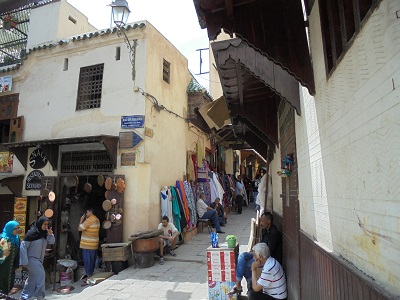
Urban Biodiversity
Along the lines of ideas that seem contrary on the surface but can operate in tandem, the concept of Urban Biodiversity combines two seemingly disparate concepts. Urban Biodiversity involves the study of wildlife as it exists in urban settings, and the story of one of the founding groups of scholars in this field is quite interesting. One of the innovators in this field was the German botanist Herbert Sukopp at the University of Berlin, whose initial foray into this area of study began in 1960s Berlin. Students of the Cold War will recognize at once that this meant that Sukopp was living in what was essentially a politically-enforced geographic island. West Berlin at the time was geographically surrounded by East Germany, which meant that Sukopp and his botany colleagues could not easily venture into the countryside to study the flora of the region (or anywhere else, for that matter).

These scholars thus focused their attention on the biodiversity of their immediate surroundings, which happened to be the city of West Berlin. This level of focus and attention, as well as dedication, enabled them to make observations that their colleagues in other, more free-ranging departments overlooked. As such, the University of Berlin became the cradle of advanced urban wildlife studies. The lesson here for the innovator is a reminder that sometimes the source of new thinking can be what is in one’s immediate surroundings. Finding this new thinking can sometimes emerge when one focuses intensively on a single concept rather than simply following in the paths tread by many others and trying to find a niche on a well-trodden route.
Atogaki
Writing in a light-hearted in tone but insightful analysis of Japanese culture, the American journalist T. R. Reid’s Confucius Lives Next Door takes the reader on a tour of life in Tokyo in the 1990s. One of the concepts that Reid introduces to the Western audience is that of “atogaki,†a Japanese word that combines the two characters of “after†and “written.†For the most part, the atogaki is the equivalent in English to the term “afterword,†which is a section at the end of a book in which an author can “restate the basic point, wrap up loose ends, slip in a few snide remarks about competing books, and so forth.†Yet as Reid observes, Japanese authors have found a different usage for their afterword. The atogaki, he writes, is often used “with remarkable honesty, to set forth the various flaws, fallacies, logical lapses, and factual lacunae in the book they’ve just written.†This is of particular utility for a “serious book dealing with fairly complex ideas and historical processes, [which will often] have some problems of this nature; a truly seamless argument is probably as rare as a truly cloudless sky.â€

As innovators, we often struggle with coming up with a way to wrap up a piece of work in which we are engaged, whether that is an ideation workshop or a presentation to stakeholders on a new idea. We often fall into the predictable pattern of restating the core idea of the session and repeating the value proposition or benefits of the proposed solution. While these are important things to do, especially after a long presentation, an atogaki-inspired approach could also lead to interesting discussion as it would lay bare to the audience the fact that the innovator is aware of any flaws in the proposal. This would show that the innovator has exercised due diligence in the work effort and possibly pre-empt any negative questions from the audience. My experience in these types of sessions is that if a person sitting in the room is able to identify a hole in one’s proposal after just a few minutes analyzing it, then everyone will believe that the presenter has not done enough research on the idea. By forcing oneself to write up an atogaki in advance, an innovator may be able to get ahead of these kinds of situations.
Cancer Research
During the COVID-19 pandemic it seems as though the focus of all of humanity is on the area of health care. Medical terms that usually receive little attention, such as ventilators, antibodies, vaccines, herd immunity, respiratory viruses, morbidity, and ICUs, appear on the front pages of newspapers around the globe. Yet with all this intense focus on one virus, we must not forget that a much deadlier disease, cancer, continues to ravage humanity as well with little hope in sight for a cure. One doctor who has been researching cancer and treating patients for 35 years makes a stunning and frank admission. Writing in the Wall Street Journal in October 2019, Doctor Azra Raza laments the fact that little true progress has been made in cancer treatments in the three-plus decades of his career. He observes that “[d]espite some advances, the treatments for most kinds of cancer continue to be too painful, too damaging, too expensive and too ineffective. The same three methods – surgery, chemotherapy and radiotherapy – have prevailed for a half-century.â€

Dr. Raza specializes in treating acute myeloid leukemia, a bone-marrow cancer known as AML. He writes that the disease takes around 11,000 lives per year and the five-year survival rate is 24%, with a bone-marrow transplant increasing the odds of survival to 50%. These statistics, he notes, have hardly changed since the 1970s. Overall cancer deaths in the U.S. have fallen since peaking in 1991, but this is primarily because of a large reduction in smoking as well as improvements in screening techniques. The overall cancer death rate, Dr. Raza sadly observes, is not dramatically different from what it was in the 1930s, when cigarette-use drove the rate up (then a reduction in smoking then drove it back down in modern times). This is all taking place against a flood of spending in the area, totaling some $150 billion annually and increasing every year.
Dr. Raza posits that the best way to energize cancer research is to shift the paradigm in terms of how doctors treat the disease. Currently, he notes, resources are focused on treating the most serious cases, which usually means “chasing after the last cancer cells in end-stage patients whose prognoses are the worst.†Yet instead of focusing research on the end of the cancer process, he proposes shifting attention to “anticipating, finding and destroying the first cancer cells.†This would entail “reliably detect[ing] the faint footprints of cancer at the beginning and stop[ping] it in its tracks [and would present] the cheapest, fastest and safest alternative to the terrible, longstanding treatment trio of slash, poison and burn.â€
For the innovation practitioner, this recommendation can serve as a reminder of a technique that one can use to break out of a rut of old thinking on a problem. Often times we as innovators believe that if we zero in on a specific area of a problem and apply resources intensely to that area, eventually we will come up with a creative approach to solve that problem. Sometimes this works, but many times we find ourselves unable to find the magic bullet solution and have to give up on the problem. Dr. Raza’s technique parallels something I have written about in previous innovation articles – a useful technique is to change the point in the process where one is investing time and resources. The new point in the process may be before or after the problem area, and one may find that a change early on in the process can make the problem go away, or can make it less deleterious to the overall solution. An innovator may also discover that thinking about a different part of the problem frees the mind to re-arrange concepts in a new way that can ultimately lead to the breakthrough one had been searching for all along.
An example of this technique comes from India, where water scarcity is a recurring problem for its population. Writing in his book The Big Thirst, Charles Fishman opines that for the vast majority of Indians, water is rarely available within one’s home and usually requires a trip to a central location with a container to fill one’s needs for the day. Various projects have tried to improve water availability, and one in particular in the city of Navi Mumbai resulted in a surprising discovery – giving residents more access to water resulted in them using less of it. For Indian cities where underground distribution pipes exist, the infrastructure is so poorly maintained that it is impossible for the city to pressurize the entire system because there would be so many leaks that the water would never get to its destination. As such, in some areas workers manually adjust hundreds of individual valves to provide water to subsets of the city for short periods of time since it would be impossible to provide water for everyone all the time. This encourages hoarding of water, as residents are unsure how long the water will stay on and when it will come on again so they fill up home reservoirs as fast as possible during the limited times when water is flowing.
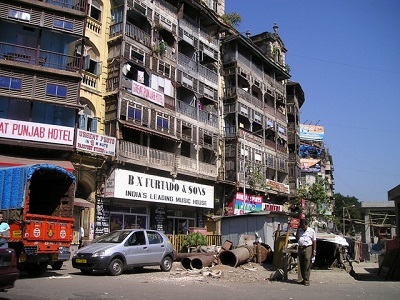
A project in Navi Mumbai to update the water service infrastructure and enable 24/7 water service discovered that once water was available all the time, people actually used less water than before. This was partly due to more effective metering, but it also was due to the elimination of uncertainty on the part of residents, which put a stop to hoarding. Fishman notes that per capita water usage declined from 75 gallons per day to 60 gallons. By making water more freely available, the citizens actually used less of it. For an innovator looking into a problem, this is precisely the kind of thinking that Dr. Raza’s shift in focus can provide. Instead of zeroing in on individual usage and trying to tweak consumption (reduced-flow water fixtures), an innovator in this scenario would have suggested looking at a different part of the water process altogether – the intermittent supply of water as the problem, not the over-consumption. One other interesting benefit from the new solution in Navi Mumbai is the existence of fire hydrants, which one does not see in most Indian cities (due to the lack of continuous pressure in the systems elsewhere).

St. Peter’s Basilica in Rome
Italy is one of the worst-hit countries in the world during the COVID-19 pandemic, and this impacted me directly as I had planned in May 2020 to begin a trip to the Southern Balkans via Rome. Although I have been to Rome many years ago on two different trips, I was nonetheless looking forward to experiencing its charms again. In 2018 I made a quick stop in Venice on a return trip from Croatia and despite all the press reports about overcrowding in the famous city I still found it to be a magical place. Being in Venice again reminded me of observations made by the historian John Reader about the city. “Venice,†he notes, “is so stuffed with points of unanticipated recognition that its appeal never fades, just intensifies with each visit.†Reader opines that “[t]here is no other city for which even the most casual visitor is so well prepared.â€

I fully expect Rome to be similarly inspirational but, alas, this will have to wait until perhaps next year. I have just finished reading a book by R. A. Scotti about the origins of St. Peter’s Basilica – one of the largest and most amazing religious structures in the world. The story of St. Peter’s Basilica is full of unexpected twists and turns. The story starts with Donato Bramante, the Chief Architect to Pope Julius II, who served in his post from the years 1505 to 1514. Bramante created the original design for the Basilica, though the project would take over two centuries to complete and would involve the work of Michelangelo, Bernini, and many other, less well-known architects. Scotti’s book on St. Peter’s mentions two particularly interesting stories from the era.
The first is the story of how Pope Sixtus V achieved the “impossible†task of moving Cleopatra’s Needle (a huge Egyptian obelisk) to the center of St. Peter’s Square, where it resides today. The massive granite object weighed 320 tons and was brought to Rome from Egypt by the Emperor Caligula in the first century A.D.. Caligula ordered it placed in the center of a great circus in Rome, requiring the labor of 20,000 slaves to move and install the obelisk. Much to the chagrin of Pope Sixtus V, the obelisk was located on the south side of the location of his desired new St. Peter’s Basilica and detracted from the design. The Pope decreed that the object must be moved to the center of St. Peter’s Square, directly in front of the Basilica, but a succession of experts, including the great Michelangelo, told him that the task was impossible. Bramante even suggested that the Pope change the location of the new Basilica to align with the obelisk rather than try to move it. The Pope was quite enraged by this suggestion and announced a competition to find someone who could develop and execute a plan to move Cleopatra’s Needle.

The winner of the competition was a local builder and engineer named Domenico Fontana, who studied ancient historical writings on how to raise an obelisk and even built a scale model to show the Pope how he would accomplish his objective. After seven months of preparations, Fontana began the process of moving the giant object on the morning of April 30, 1586. The operation took place in an atmosphere of silence, as the Pope had decreed that any spectator who made any noise would be punished with death. Scotti describes the operation as follows:
[T]he granite monolith jerked from its ancient base. The winches turned again, and again. By the twelfth revolution, the obelisk was dangling ten feet in the air. The immense mass, which weighed as much as forty bull elephants, was lifting slowly when suddenly it stopped, all motion suspended. The ropes were giving way. In the terrible silence, the gallows rope swung like a pendulum.
At this point everyone feared the worst, but out of the blue came a voice that cried out, “Acqua alle funi!†– “Water the ropes!†Fontana heeded this recommendation immediately. Once the ropes were wetted, the obelisk began to move again. It turns out that the person who broke the silence and risked death to save the operation was a sailor from the northwestern coast of Italy, who had quite a bit of experience handling ropes with heavy loads. Fontana’s operation succeeded and the Pope made him a knight of the obelisk. As Scotti notes, this project “is still considered one of the boldest achievements in [the history of] engineering technology.†Indeed, Fontana’s planning was so meticulous that he even had a horse saddled up and waiting nearby just in case things did not work out.
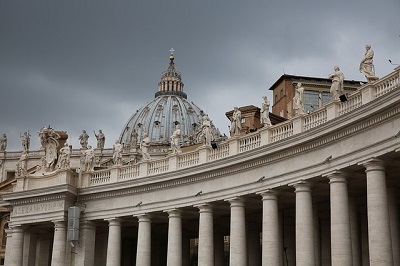
A second story from the era of the founding work on St. Peter’s Basilica involves another building on the Vatican grounds that is a must-see in addition to the Basilica. Michelangelo’s fresco on the altar wall and ceiling of the Sistine Chapel is one of the most astounding works of art not just for the Renaissance era but for eternity. One struggles to find superlatives to describe this masterpiece, with its immense size, incredible details, and vibrant colors. What is less well-known is that the Pope’s Chief Architect Bramante gave the assignment of the Sistine Chapel fresco to Michelangelo in 1508 because he saw the latter as a rival and wanted him to fail spectacularly. As Scotti writes, “Bramante had foisted the ceiling on [Michelangelo] to humiliate him. A vast space, a difficult shape, a treacherous height, and impossible position, and uncongenial medium – he was set up to fail. Even for an experienced painter, the [Sistine Chapel] was an impossible assignment.†Students of art history know that Michelangelo suffered terrible physical hardships while working on the ceiling and walls, having to lie on his back on scaffolding five stories above the floor of the chapel with paint dripping on his face while working at all the different angles and curves of the vast ceiling. It took him four years to complete the ceiling and he returned many years later to complete the altar wall. The result was one of the greatest works of art in world history and the effect on anyone who walks into the chapel is truly breathtaking.

The lessons for the innovator from these scenes in Rome in the early 1500s are twofold. First, an innovator should always be the one who rises to the challenge when others say that something is impossible. Domenico Fontana’s technique for devising a plan to move and raise the Egyptian Obelisk leveraged precisely the kinds of things that we innovators use today in our work. Reading the ancient historical records on obelisk movement was very innovative, as opposed to other contestants who likely focused more on “modern†approaches. Building a physical model for the Pope made the innovation more “real†than others who simply proffered solutions on paper. Not being afraid to take advice from someone in a completely unrelated field (in this case, a well-timed shout from a nearby sailor) always helps an innovator. Finally, having a backup plan (a horse ready to go) is always a good idea, just in case things do not work out as planned.
In terms of the Sistine Chapel ceiling, the lesson for the innovator is that sometimes when we are faced with the greatest adversity as humans we have a tendency to perform at our highest level and achieve our greatest accomplishments. An innovator should never fear taking on the greatest challenges, as those will almost always be the ones with the greatest rewards for our colleagues and customers. We may not always succeed in these endeavors, but imagine a world where Michelangelo looked at the ceiling of the Sistine Chapel and concluded that he would rather work on something less difficult. In the coming few weeks where all of our normal routines are upended, I suggest each of us reflect back on a challenge we faced before that was characterized as impossible or so time-consuming that we set it aside in favor of a more malleable, shorter-term project. Time that in previous weeks we would have spent commuting in a car, flying on a plane, checking into a hotel, or wandering a shopping mall can now be seen as bonus time to think about an old intractable problem.
The Quarantine
In July 2018 I published an article in these pages on innovation in the Southern Balkans which included a brief discussion on the concept of quarantine as it related to the walled city-state of Dubrovnik in southern Croatia. I took a ferry to the small island of Lokrum, just off the coast of Dubrovnik. The island is a national park and contains the remains of an old fort and palace. On the ride back, I took a photo of an interesting brick building on the waterfront just outside of the city walls. Upon further research, the building turned out to be an old quarantine station (the term quarantine is derived from ‘quaranta giorni,’ which means 40 days), built in the 1600s and used to isolate travelers for 40 days before they would be allowed entry into the city of Dubrovnik. Dubrovnik made use of the concept of quarantine even before the 1600s, with structures and schemes (use of remote islands) for isolating arriving voyagers dating back to the 1300s. This was a crucial technique in an era of repeated plagues and poor hygiene.
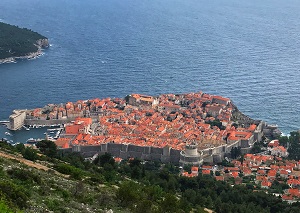
I remember at the time thinking that quarantine was such an antiquated technique for battling the spread of disease and thought that in the year 2018, such brutal mechanisms would not be needed. Obviously, I was wrong, as now nearly all of the world’s population has experienced quarantine in the COVID-19 era, though the 40 days is reduced to two weeks based on the presumed incubation period of the virus. Many people around the world have also experienced a shelter in place or social distancing order from their government as a way to slow the propagation of the virus, and these orders have lasted weeks and even months. When I chuckled in 2018 at the thought of a 40-day physical quarantine as the only way to stop a virus from spreading, I assumed that in the modern era of smartphones, supercomputers, artificial intelligence, GPS, infrared thermometers, advanced pharmaceuticals, gene-editing, and myriad other technologies, any virus coming up against the human race in the 2000s would be defeated handily.
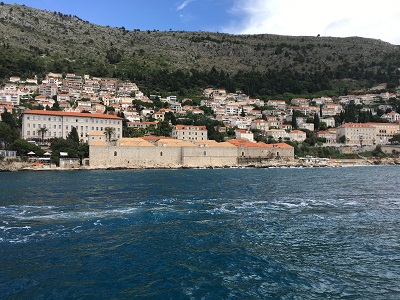
Yet as all of us are living right now, that is not the case. While our innovation engine has swung into action to respond to this pandemic, the question an innovator needs to ask is why had no one applied innovation techniques to this problem beforehand in a proactive manner? This experience can serve as a reminder that we need to spend time thinking about future problems rather than just solving immediate, day-to-day challenges. Companies and public institutions in the fields of epidemiology, pharmaceuticals, health care, and manufacturing certainly have been investing in innovation in previous years, but perhaps their efforts were misdirected. For the innovation practitioner, it may be worthwhile to spend at least some time thinking about scenarios that seem far-fetched but are worth investigating, such as a sudden and massive drop in demand for one of our company’s products followed by a massive spike in demand for another product. How quickly the company could retool to address the new demand and shift workers to the new line would be a topic worth covering in an innovation session. In the IT field we perform disaster recovery testing on a periodic basis. Perhaps this type of scenario could be added to those tests, using the creative thinking and expertise of the innovator to put together different possibilities to consider.
Sources:
Cristen Hemingway Jaynes, Ernest’s Way: An International Journey Through Hemingway’s Life (New York: Pegasus Books, 2019).
Levison Wood, An Arabian Journey: One Man’s Quest Through the Heart of the Middle East (New York: Grove Press, 2018).
Gerard Koeppel, City on a Grid: How New York Became New York (New York: Da Capo Press, 2015).
Menno Schilthuizen, Darwin Comes to Town: How the Urban Jungle Drives Evolution (New York: Picador, 2018).
T.R. Reid, Confucius Lives Next Door: What Living in the East Teaches us about Living in the West (New York: Vintage Books, 1999)
Azra Raza, “Cancer is Still Beating Us: We Need a New Start,†Wall Street Journal (October 5, 2019, pp. C1-2.
Charles Fishman, The Big Thirst: The Secret Life and Turbulent Future of Water (New York: Free Press, 2011).
John Reader, Cities (London: William Heinemann Random House, 2004).
R.A. Scotti, Basilica: The Splendor and the Scandal: Building St. Peter’s (New York: Plume, 2006).
Photos courtesy of the author and Pixabay.com
NEVER MISS ANOTHER NEWSLETTER!
LATEST BLOGS
Three things you didn’t know about credit cards
Photo by Ales Nesetril on Unsplash Many of us use credit cards regularly. From using them for everyday purchases to…
Read MoreFive CV skills of a business-minded individual
Photo by Scott Graham on Unsplash The skills listed on a CV help employers quickly understand your suitability for a…
Read More

